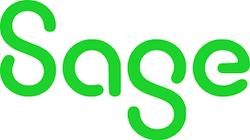6 examples of sole traders – Small Business UK
What are some examples of sole traders? A sole trader can do or be anything really – the key thing is that, legally, there is no distinction between you and your business when it comes to finances, assets and responsibility for debts and liabilities.
What’s great about being a sole trader is that it is the simplest business structure to register with HMRC and, unlike setting up a limited company, there’s no fee. You also have full control over the enterprise and get to keep all your own profits after tax.
This simple structure and setup lends itself to business ideas with relatively low start-up costs and barriers to entry. Nevertheless, a sole trader operation can be very lucrative and here are six great examples.
Examples of sole traders – Personal Trainer
What kind of people make the best personal trainers?
Becoming a personal trainer can be a great choice if you’re sporty and want to go into business for yourself as a sole trader.
Of course, you must have a passion for fitness, but many people become personal trainers as a second career or a side hustle or they have a supportive partner who take the pressure on having to earn a high wage.
The people who do best as self-employed personal trainers are those who combine their passion for fitness with business acumen.
However, if you want to make it as a personal trainer, you need to be prepared to work long hours – the working day can start as early as 6am, be responsible for getting your own initial and ongoing qualifications, do your own marketing and manage your client diary.
Do I need a qualification to become a personal trainer?
The answer is yes. The minimum you need is a Level 3 Certificate in Personal Training and its prerequisite, a Level 2 Certificate in Gym Instruction. The good news is that you can be certificated in a number of ways, including full-time and part-time in person. Puregym Personal Training Academy offers an online-only 14-week course offering both certificates at the end.
Once you’ve got your certificate, you can start drumming up clients.
The next stage is a Level 3 certificate, which include sections on nutrition and running your own business.
Ross Mitchell, who trains personal trainers for PT training company Future Fit, says: “I always advise people to get their Level 3 because after that, the sky’s the limit.”
As well as doing this qualification through private training companies, there is the option of doing a ‘Personal Trainer Level 3 Advanced Apprenticeship’ (which is the equivalent to an A level but with useful experience built in). If this is an appealing route, you can search for training providers within the Health and Science apprentice category here.
A Level 4 qualification includes working with people who have medical conditions such as diabetes and means you can be referred to by medical practitioners.
Do I need to be based in a gym?
Not necessarily. Some gym chains, such as Puregym encourage freelance personal trainers to rent gym space, as do some independent gyms. Gyms will pay you around £30-£35 per class if you’re a freelancer leading a fitness session.
Mitchell says: “My advice would be to work in a gym to start with. Working onsite will help you better understand people,and also help you understand where you want to go in the fitness industry.
“Being a personal trainer isn’t just about fitness. It’s about understanding your client’s personality, their struggles. Not everybody is as enthused about fitness as a newly qualified personal trainer.”
Or you could specialise in outdoor training, offering sessions in local parks. But if you go fully mobile straight away, you won’t have any clients, marketing or visibility. And even if you just set up in the park offering workouts, you may still have to pay your local council.
Other places where you can work as a self-employed personal trainer include:
- Office-based inhouse gyms
- Holiday resorts and hotels
- Cruise ships
Should I specialise in one type of fitness?
The short answer is yes, says Ross Mitchell, who compares having a fitness speciality to being a specialist surgeon as opposed to a general doctor.
Fitness specialisms that are currently popular include:
How much does it cost to become a personal trainer?
The National Register of Personal Trainers says that courses can cost anywhere from around £900 through to £5,000 for an intensive six-week course. To gain a full Level 3 qualification as a personal trainer, you can expect to spend up to around £2,500 as an average course price.
Do I need personal trainer insurance?
Specialist personal trainer business insurance protects you against potentially costly claims from clients if something goes wrong during a session. It also covers you if your equipment is lost, damaged or stolen, if you injure yourself when training or if an employee gets injured while working for you.
It’s so important that proof of specialist insurance is required by most gyms and sports centres before they allow you to work at their facility.
What types of insurance are required by law?
If you train with clients having public liability insurance is essential. This protects your legal liability if a claim is made against you for injury to another person or property damage. For example, you may need to claim if a client injures themselves during a session and holds you responsible or if you accidentally damage a facility you’re training at.
Professional indemnity insurance is also essential if you train clients – this covers you if a client injures themselves as a result of an exercise you’ve instructed and makes a claim against you.
It’s not just injury to your clients you should consider.
If you injure yourself while training, then you need personal accident insurance to cover potential physiotherapy or dental treatment costs. When you take out personal accident insurance, you can also get optional loss of earnings cover for up to 52 weeks in order to support you financially if your injuries mean you’re unable to work.
Another vital requirement of personal trainer insurance is equipment cover. If you transport your equipment to and from a fitness centre or a client’s home, you need equipment cover to protect it against loss, theft and damage. For instance, someone could break into your car and steal your equipment, or it could be damaged by an inexperienced client during a session. If these things happen and you don’t have equipment cover, you would have to pay for repairs or replacements out of your own pocket.
How much will I earn?
The average hourly rate charged by personal trainers is £30-£35, according to Puregym. In your first year, expect to earn as little as £10,000-£16,000; rising to £16,000-£20,000 in year two. Fully fledged trainers earn anything between £25,000 and £60,000.
Some trainers who work with elite amateur athletes can charge up to £100 per hour for specialist training. Be warned though, if you’re thinking it would be cool to coach the next Dina Asher-Smith or Katarina Johnson-Thompson, famous athletes may pay you nothing – thinking it’s worth your while being associated with your brand for other lesser clients.
Ross Mitchell of Future Fit says that the attrition rate for people becoming personal trainers is high, mainly because people do not treat it like a business.
“Unfortunately, this is not Field of Dreams. If you build it, they will not come,” he says. “You have to put in a lot of effort.”
However, all it takes is for one of your workouts to go viral on social and you could become the next Joe Wickes.
>See also: What is a sole trader? A small business guide
Small Business Pro, our all-in-one solution, can save you time and money as well as offering peer support and the chance to win a monthly £2,500 grant. It will also help with the heavy lifting of managing customers, taking payments, insurance, finance and HR, plus you’ll get a host of personal wellbeing benefits.
You can find out more about Small Business Pro here.
Examples of sole traders – Gardener

If you love being out in nature, come rain or shine, becoming a gardener is a rewarding and relatively low-cost sole trader opportunity.
Do I need a qualification to become a gardener?
Mark Soanes of Urban Paradise spent 15 years in media working as an operational manager for companies including Virgin and Universal before being made redundant in 2016.
A keen amateur gardener, he decided to become a garden designer and landscape manager, doing a one-and-a-half year degree in garden design at the British Academy of Garden Design.
Soanes recommends taking a course before starting out as a self-employed gardener, such as those offered by the Royal Horticultural Society (RHS).
Soanes said: “A lot of people undervalue gardeners because there’s a lot to learn. It’s a lifetime learning process. You’re constantly learning by taking as many courses as you can, but everybody has to start somewhere.”
You can always join a gardening firm
Another route to becoming a self-employed gardener would be to join a bigger gardening firm by becoming a junior gardener. That way, you don’t have the outlay of setting up on your own and you should be partnered with another, experienced gardener who you can watch and learn from.
How much does it cost to set up as a gardener?
According to Fantastic Gardeners, would-be self-employed gardeners should budget for anything between £7,000 and £10,000 in set-up costs, including buying a van to transport tools, buying proper equipment and professional indemnity insurance.
What are my setting up costs?
- Tools – lawnmower, strimmer and hedge trimmer are essentials, as well as a spade, fork, shears, secateurs, loppers, lawnmower (best to have a battery-powered one), ladder, leaf blower, hedge trimmer, wheelbarrow, safety glasses, hosepipe, spray applicator, etc. Aim to spend at least £1,500 on gardening equipment.
- Van – for transporting tools and equipment
- Licences – you need a licence to operate a chainsaw, use pesticides or carry waste
- Website build and maintenance
- Uniform
- Bookkeeping software
- Professional indemnity insurance – costs as little as £70 a year
Where do I find clients?
By registering with the Gardeners Guild, you can list the services you offer. Full membership is currently just £45 a year (plus £10 initial registration fee). However, you must have at least one regulated horticultural qualification at Level 2 or above before being accepted for membership.
How much will I earn?
Professional gardeners work in blocks of three to four hours – otherwise it’s just not cost-effective factoring in travelling to and from jobs.
Gardeners can charge between £20-£50 an hour or a minimum £150 per day. This equates to anything between £15,000 and £70,000 a year, depending on how sophisticated a service you offer.
And, contrary to popular opinion, gardening and landscaping is a year-round job – there’s always something to be getting on with.
>See also: Can I switch a limited company to sole trader?
Examples of sole traders – Hairdresser

One of the great things about being self-employed as a hairdresser is that you can grow into the role (sorry!). You can start out as a junior stylist and then work your way up, either working for a big city-centre salon or opening your own premises.
Or you can go completely mobile, visiting clients at home, while renting a chair in a salon for clients to visit you.
What qualifications do I need to be a hairdresser?
You can study hairdressing at college (such as a Level 2 or Level 3 Diploma or a T-level in Hairdressing, Barbering and Beauty Therapy – England only, from September 2023).
Or you could do an apprenticeship in a salon with a view to becoming a trainee hairdresser in a salon and learn on the job. Your employer will provide you with a certificate after you complete your apprenticeship. There are different levels of apprenticeship that will qualify you for different levels of National Vocational Qualification (NVQ) diplomas.
- Intermediate hairdressing apprenticeship (haircutting, shampooing, basic colouring, customer service) – qualifies for NVQ Level 2
- Advanced Apprenticeship (creative hairstyling, advanced colour, salon management) – qualifies for NVQ Level 3
Renting a chair
One of the benefits of being a self-employed hairdresser is that you can either visit clients in their homes or have them come to your home.
Another option is what’s called “renting a chair” where you rent a chair in a salon, either paying the owner a fixed daily/weekly fee or a percentage of takings when you are there. The standard percentage is around 40 per cent.
What equipment will I need?
- Scissors, combs, electric clippers
- Hair straighteners/curlers/wavers
- Hairdryer
- Protective floor covering
- Protective cape for client to wear
- Towels
- Sectioning clips
- Hair products (shampoos, conditioners/styling products/colours)
What kind of insurance will I need to become a hairdresser?
What kind of insurance do I need?
Professional Beauty Direct offers self-employed hairdressing insurance starting at £42.50 a year. The policy is designed for self-employed mobile hair stylists and hairdressers, who either work from their home or visit clients, or rent a chair in a salon. The policy offers liability cover of up to £6m. You can add equipment cover as an additional cost.
The insurance package, which offers liability cover of up to £6m, includes:
Public liability insurance covers any injuries or accidents that may occur in your home or at your work premises, such as a customer stabbing themselves with your scissors.
Product liability insurance covers the products you sell to clients following a treatment, e.g. the products you used on them or aftercare products. This includes any allergic reaction to the product.
Treatment liability insurance covers claims made against you by a client if they experience illness or injury as a result of you providing a treatment
How much will I earn?
The average salary for a hairdresser is between £14,000 per year for a junior hairdresser and £30,000 per annum for a highly experienced hairdresser.
Examples of sole traders – Private Chef

What does a private chef do?
If you’ve ever watched MasterChef on TV, you will have noticed that many of its contestants go on to set up their own businesses as private chefs. And many of the MasterChef professionals are already working as a private chef.
Setting up as a private chef could mean you cater for one-off dinner parties or you’re called in to cater for glamorous country house weekends or even working for the rich and famous on yachts as an onboard cook.
However, be prepared for hard work: private chefs can work up to six days a week, covering everything from breakfast through to dinner, and then there’s the wiping down and washing up, which means up to 12-hour days.
Broadly speaking a private chef:
- Plans menus
- Shops for ingredients
- Prepares, cooks and often serves meals
- Clears away and cleans the kitchen
Do I need a qualification to become a private chef?
Many chefs go to a cookery school such as Ballymaloe, Le Cordon Bleu or Leiths to formally train and then start as a cook to gain experience.
Or they may start in a kitchen restaurant working their way up to sous chef before setting up on their own.
But there’s nothing to stop you from just going into business for yourself, if you’re passionate about your own food.
Gary Maclean, MasterChef winner and the national chef of Scotland, says: “A lot of people fall into it. The biggest draw is the freedom to develop your own food and do what you want. The chefs who go into it want to do their own thing without having a head chef over them. A lot of private chefs are enthusiasts who have never worked in a professional kitchen. My advice would be to give it a go but just start small.”
What skills do I need to be a private chef?
Maclean says that in addition to being able to cook, private chefs need to organised and good at planning a dinner party from start-to-finish.
“You need to be able to think on your feet,” he says, “as you never know what’s going to be thrown at you. It’s not as if you can reach for the store cupboard or the chiller, as you can in a professional kitchen.”
What equipment do I need as a private chef?
Maclean advises investing in your own kitchen equipment, as having top-quality tools really helps when it comes to producing and delivering a first-class dinner party. But the most important thing is to be passionate about what you’re doing, whether or not you’re already working in a professional kitchen and are offering dinner parties as a side hustle.
How much will I earn?
A live-out private chef can earn between £30,000 and £70,000 per annum. The average salary for a private chef is about £38,732 per year.
Examples of sole traders – Photographer

What does a freelance photographer do?
In a way, we’ve all become photographers. All of us snap away on our iPhones to feed our Instagram accounts. If you’ve got a good eye, you might want to take things further and become a self-employed photographer.
There are plenty of niches you can specialise in as a freelance photographer:
- Event photography
- Fashion photography
- Food photography
- PR photography
- Product shots
- Property photography
- Social media images
- Sports photojournalism
- Stock photography
- Travel photography
- Wedding photography
Do I need qualifications to become a freelance photographer?
You’re not required to have formal qualifications, but certificates can reassure clients. In addition to studying photography at art school or university, organisations including the British Academy of Photography, the Royal Photographic Society and the British Institute of Professional Photographers all offer courses.
What equipment do I need to become a freelance photographer?
- Camera – recommended models include Canon EOS 200D, Nikon Z6, and the Sony Cyber-shot RX100 Mark IV
- Lenses – fisheye, wide zoom, macro, telephoto, etc.
- Lighting – lamps, diffusers, reflectors
- Other equipment – tripod, memory cards, flash triggers, strobes
- Editing software – Adobe Photoshop and Adobe LightRoom are industry go-tos
- Computer – recommended models include , the Acer Predator Helios 500, 16″ MacBook Pro and the Dell XPS 15
How much can I earn as a freelance photographer?
According to Glassdoor, the average earnings of a freelance photographer is £31,336. If you’re starting out, the average hourly rate is £28.44 according to Indeed.
Examples of sole traders – Graphic Designers

If you’re creative, have a keen eye for visual aesthetics, and enjoy digital work, becoming a graphic designer can be a rewarding sole trader business. With relatively low start-up costs and the flexibility to work globally, graphic design offers significant potential to freelancers in the UK.
Do I need qualifications to become a graphic designer?
Formal education, such as a degree in graphic design or digital communication, is the traditional path, but it’s not the only way. Many successful designers start by building their skills independently through online courses, self-study, or apprenticeships.
Graphic designer Lucy Rigley advises: “College and university are good places to start, but don’t wait until you’re fully educated. Always have side projects to showcase your skills.”
Should I specialise?
Specialising can help you stand out and potentially charge higher rates. Popular specialisms include:
- Web and App design
- Branding and Logo Design
- Illustration and Typography
- Packaging Design
- Accessible Design (e.g., disability-friendly content)
- Motion Graphics and Infographics
How much does it cost to set up as a graphic designer?
The start-up costs for graphic designers vary depending on the equipment you already have, but here’s what you might expect:
- Laptop capable of handling design software: £800–£2,000
- Design software subscriptions (Adobe Creative Suite, etc.): £20–£60 per month
- Drawing tablet: £50–£300
- Website domain and hosting: £50–£200 per year
Total initial costs can range from £1,000 to £3,000.
How do I find clients?
Building a strong online presence is crucial:
- Create a professional portfolio showcasing your best work.
- Establish profiles on platforms like LinkedIn, Fiverr, Upwork, and Freelancer.
- Network through professional bodies such as the Chartered Society of Designers or ISTD.
- Leverage social media (Instagram, TikTok, Pinterest) to showcase your design skills.
What insurance do graphic designers need?
Protecting your freelance business is important. Recommended insurance types include:
Professional Indemnity Insurance: Protects against claims of financial loss from clients.
Business Equipment Insurance: Covers laptops, tablets, and other equipment against theft or damage.
Public Liability Insurance: Covers injury or property damage claims.
Employers’ Liability Insurance: Required if you hire any staff.
How much can graphic designers earn?
Earnings vary by experience and speciality. Beginners might earn around £18,000 annually, while experienced freelance graphic designers can earn £40,000 or even much more.
Hourly rates typically range from £20–£100, with mid-level designers charging a minimum daily rate of about £250.
Tips from graphic design freelancers
Micah Purnell, freelance graphic designer, says: “Freelancing is rewarding but work can be sporadic, so budgeting is crucial.”
Andrew Wicks advises: “Remember freelancing means no paid holiday or sick leave. Diversify your client base, maintain flexibility, and evolve your skills continuously.”
The top business bank accounts for sole traders
Unlike setting up a limited company, when you’re legally obliged to open a business bank account to keep your personal and business finances separate, you can just use your regular bank account as a sole trader. However, it can be helpful for admin and tax purposes to have a business account anyway. Here are three of the best options:
Tide

Tide is ideal for sole traders seeking flexible, scalable business accounts. It offers easy accounting integrations, scheduled payments, and expense management, with higher-tier plans providing extra benefits like team access, unlimited transfers, and competitive savings rates.
- Free: £0/month
- Smart: £12.49/month (+VAT)
- Pro: £24.99/month (+VAT)
- Max: £69.99/month (+VAT)
CardOneMoney

CardOneMoney suits sole traders who need straightforward business banking with prepaid corporate cards and foreign currency transactions. It integrates easily with accounting platforms but isn’t protected by FSCS, meaning there’s no deposit protection.
- £12.50/month (+ £55 setup fee)
- Additional fees: ATM withdrawals, selected transactions (2.75% currency conversion)
Countingup

Countingup provides sole traders with simple banking plus automated bookkeeping, invoicing, receipt scanning, and tax-saving tools. It’s designed specifically to streamline financial management but lacks built-in international payments (available via CurrencyFair). Self-employed accounts are capped at £60,000.
- £3/month (deposits up to £750)
- £9/month (deposits between £750–£7,500)
- £18/month (unlimited deposits)
The best accounting software for sole traders
Sage

Ideal for sole traders and microbusinesses seeking easy-to-use, feature-rich cloud accounting. Sage automates bookkeeping, invoicing, cash flow forecasting, and VAT returns, with AI-powered assistance included.
- Start: £18/month
- Standard: £39/month
- Plus: £59/month
Free for first 3 months.
Xero

Best suited for SMEs needing comprehensive accounting with payroll options and extensive third-party integrations. It handles invoices, banking reconciliation, inventory tracking, and expenses, though payroll is limited to higher plans.
- Ignite: £16/month
- Grow: £33/month
- Comprehensive: £47/month
- Ultimate: £59/month
Discounted for the first 6 months.
Moss

Perfect for businesses looking for flexible, modular expense and spend management. It offers automated expense tracking, unlimited corporate cards, and integrates smoothly with accounting software. Suitable for companies with at least 10 employees.
- Starter: Free (up to 3 users)
- Custom Pricing: Tailored plans based on chosen modules and add-ons
Pricing available on enquiry.
More on sole traders
Best business bank accounts for sole traders – A look at some of the best accounts on the market targeted specifically at the sole trader.

